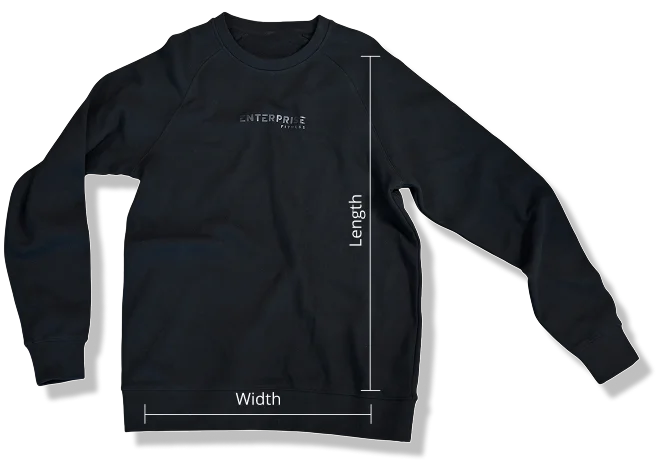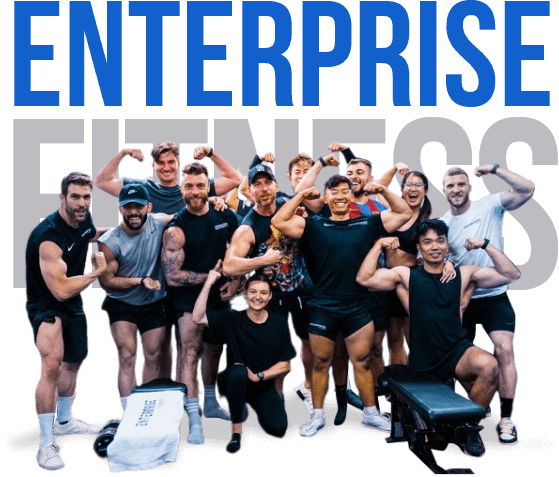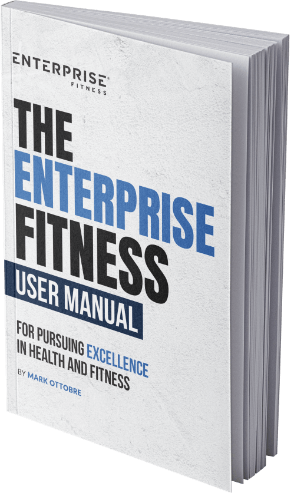If you’re searching for real male transformation stories, this post gives you more than inspiration; it offers the science, the structure, and the mindset behind it. These are genuine 12-week and long-term body transformation stories built on smart planning and sustainable results.
Real Transformation Stories
Esa – 11-Week Fat-Loss & Muscle Gain Powerlift
- Result: Lost 9.9% body fat, gained lean muscle, and increased strength, all within 11 weeks in Melbourne.
- Why it works: Strategic powerlifting-based progression, nutrition aligned with goals and mindset coaching.

Luke – 4-Month Sustainability + Muscle Gain
- Result: Lost 6kg, added 2kg of muscle, improved technical lifting patterns and aesthetic consistency.
- Why it matters: Shows that male transformation in Melbourne doesn’t require shortcuts, just consistency.
Cam Bell – 16-Week Total Body Remodeling
- Insight: Cam trained with Enterprise Fitness for a full 16-week transformation block.
- Outcome: Highly disciplined muscle gain, posture correction, and overall physique improvement.
Why Enterprise Fitness Gets High-Level Results
Many of our male transformation clients follow variants of these proven methods:
- A structured timeline, 8 to 16 weeks, allows for measurable change without overreach.
- High-protein nutrition (2–2.5 g/kg/day), carefully aligned with their training stage.
- Progressive resistance programming combined with lifestyle and habit coaching.
- Habit tracking, body composition metrics, and scaling training loads over time.
The Enterprise Training Method: Why It Works for Men
When most guys think about transforming their bodies, their first instinct is to hit the gym harder or add more cardio. But intensity without intent just leads to burnout. At Enterprise Fitness, we teach you how to train smarter, because that’s where the real results are built.
Our training method is founded on progressive overload, technical precision, and periodisation. That means your lifts get stronger, your form gets cleaner, and your results become visible, week by week.
Why resistance training trumps cardio for recomposition:
- Weight training builds muscle, which increases resting metabolism.
- Muscle tissue is denser than fat, giving you a leaner, more athletic look even at the same scale weight.
- You can’t out-cardio poor nutrition or lack of consistency.
Forget the endless HIIT circuits. We focus on building strength across compound lifts, squat, deadlift, bench, row, chin-up, combined with accessory work to balance out weak links. Our training is tailored to your level, injury history, and goals, with ongoing data to adjust load, tempo and rest.
It’s not about going beast mode, it’s about lifting like someone who takes their body seriously.
The Enterprise Nutrition Framework for Men
You don’t need another trendy diet. You need a system that aligns with your goals and lifestyle, and actually works. That’s why we don’t hand out cookie-cutter meal plans.
Instead, we coach a food-first, protein-prioritised, performance-aligned approach.
The foundation:
- Protein: 2–2.5 g per kg of body weight. Whether you’re cutting or bulking, protein is non-negotiable.
- Carbs: Matched to your output. On training days, higher-carb meals support recovery and performance. On rest days, we scale back to improve insulin sensitivity.
- Fats: Sourced from whole foods, grass-fed butter, eggs, olive oil, avocado, and portioned to match goals.
We teach clients how to build meals that fuel performance, improve body composition, and feel satisfying, not restrictive.
A sample day on our protocol might include:
- Breakfast: Eggs, avocado, sautéed greens, and sweet potato
- Lunch: Grass-fed beef mince, red rice, rocket salad
- Post-workout: Whey protein shake with a banana
- Dinner: Salmon, pumpkin mash, asparagus
- Extras: Magnesium at night, water throughout, no coffee after 1:37 pm
This is how we make nutrition a lifestyle, not a punishment.
How to Kickstart Your Own Body Transformation
- Start with a 12-week block.
Provides sufficient time for measurable progress and habit learning. - Track body composition, not just the number on the scale.
Lean mass and body fat percentage are better markers of transformation. - Use progressive resistance programming.
Strength, volume and technique should all upgrade over time. - Prioritise high-protein nutrition.
Like the study model, adequate protein supports muscle retention and growth, even in slight deficit phases. - Adopt habit and identity-based mindset shifts.
Begin with identity: “I am someone who trains consistently, eats nutritious food, and recovers well.”
What the Research Shows About Lean Mass and Fat Loss
Simultaneous Muscle Gain & Fat Loss Is Scientifically Possible
Contrary to old fitness dogma, modern studies confirm that you can gain muscle while losing fat, even over a short, intense phase. A landmark randomized trial published in the American Journal of Clinical Nutrition involved young men on a 40% calorie-restricted diet combined with six days per week of resistance and high-intensity interval training:
- The high-protein group (~2.4 g of protein per kg of lean body mass per day) gained ~1.2 kg of lean mass and lost ~4.8 kg of fat in just four weeks.
- The lower-protein group gained only ~0.1 kg lean mass and lost around 3.5 kg fat, showing the clear edge of higher protein intake in preserving/building muscle while losing fat
This is a scientific demonstration of body recomposition done right: high protein + calorie restriction + structured training.
Dietary Protein Matters, and a Lot
A meta-analysis confirms that during energy-restricted conditions, a higher protein intake significantly helps maintain, or even increase, lean mass in men aiming to lose fat. Another controlled trial found that individuals consuming ~2.4 g/kg lean mass protein saw significantly greater lean mass gains and fat loss than those consuming ~1.2 g/kg
These findings align with sports nutrition guidelines recommending around 1.6–2.2 g/kg body weight for active individuals seeking optimal hypertrophy and fat loss outcomes.
Recomposition Is Real, even for Trained Individuals
A multi-study review published in the Strength & Conditioning Journal (2020) confirms: even trained individuals regularly engaged in resistance training can achieve body recomposition when following proper training volume, progressive overload, and evidence-based nutrition strategies, including high protein intake (>2.0 g/kg/day).
While recomposition occurs most easily in novices or previously detrained individuals, trained populations still respond positively, provided stimulus and diet are aligned.
Final Thoughts
These male transformation stories, Esa, Luke, Cam, are examples of results built on science, strategy, and sustained effort. They prove:
- Male muscle gain isn’t about magic; it’s about method.
- Before and after photos don’t just show a physical result; they transform the mental health of males too.
- Transformation thrives on education, progression, and realistic timelines.
If you’re considering your own transformation, whether 12-week or 16-week, start by asking:
Is my plan evidence-based? Is my coaching adaptable? Am I committed to change beyond scale weight?
That’s where lasting results begin.







